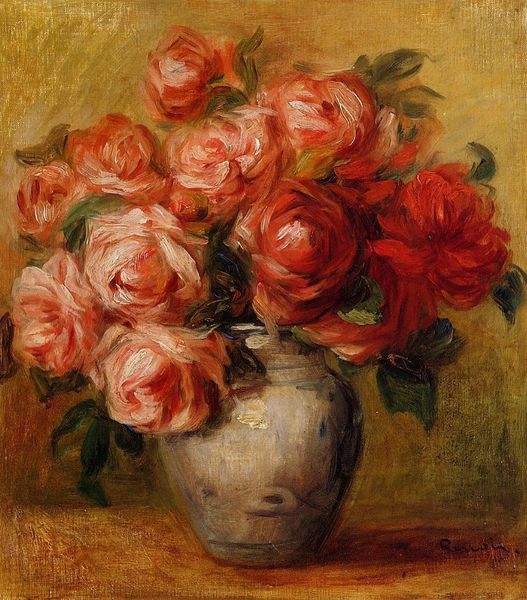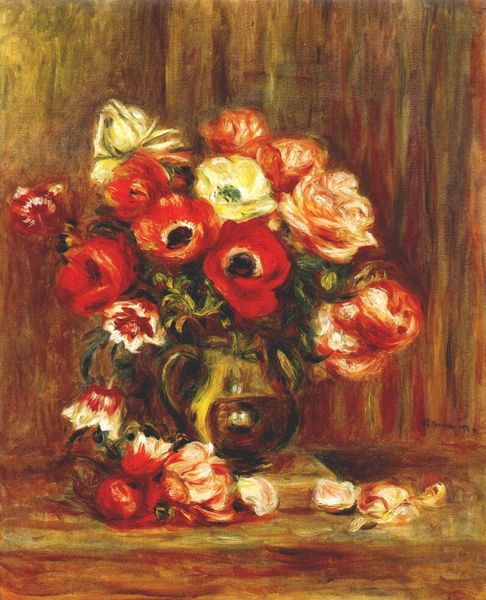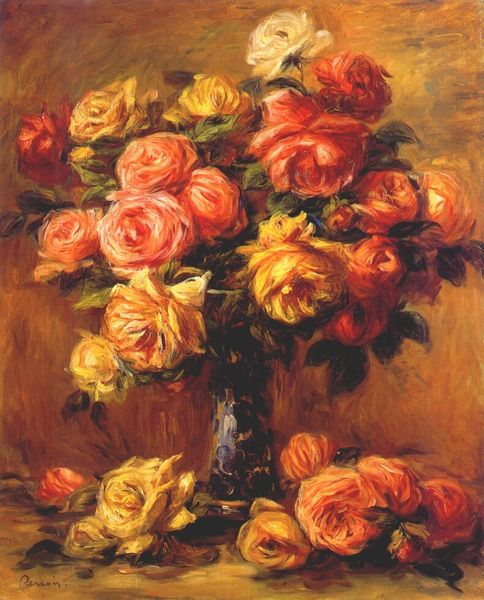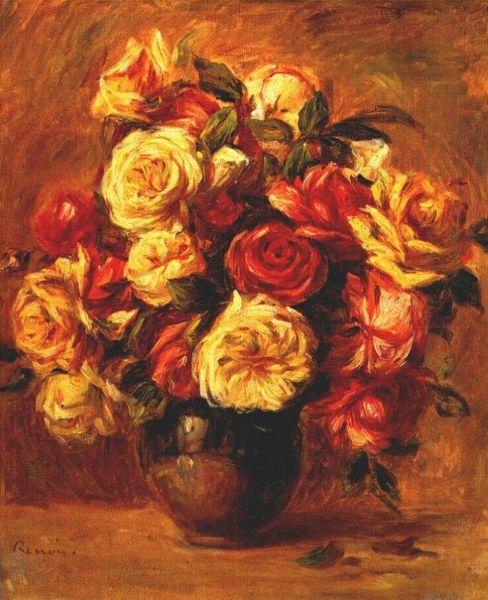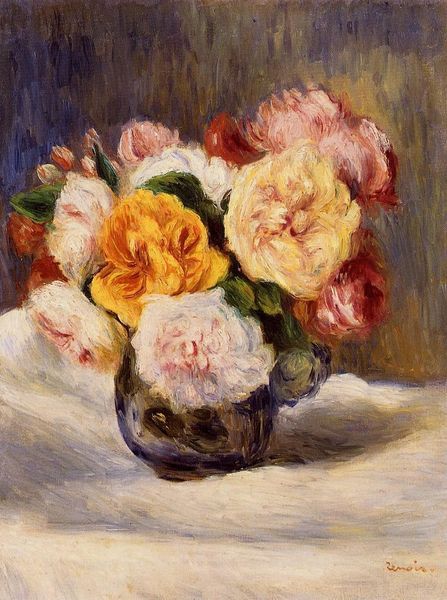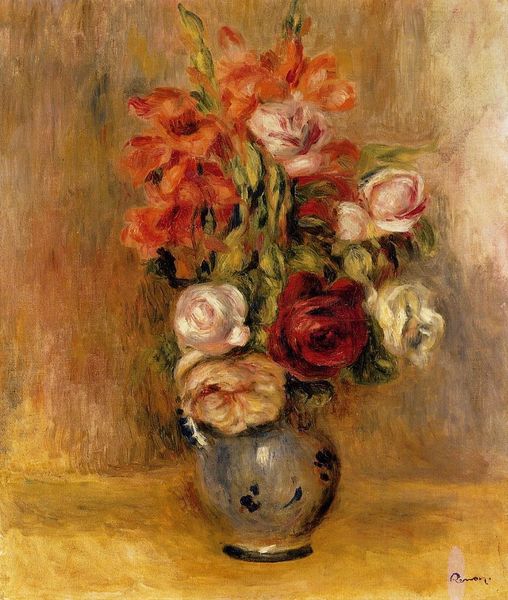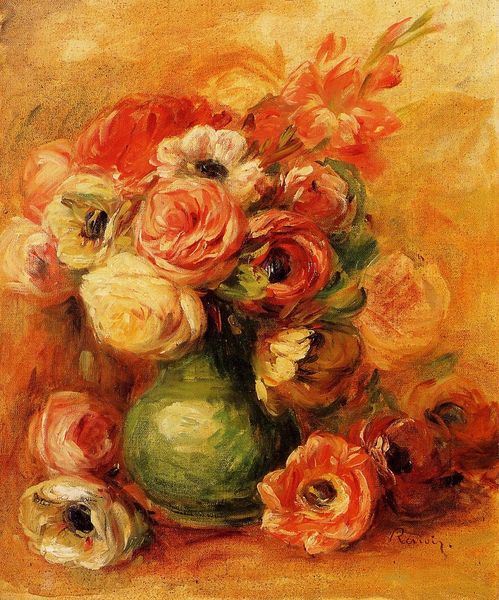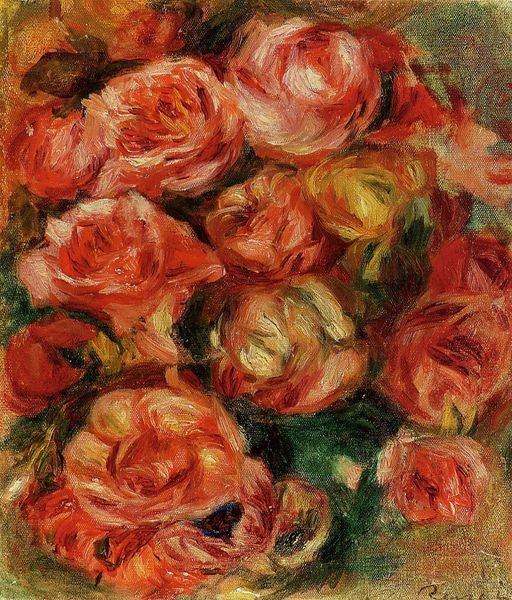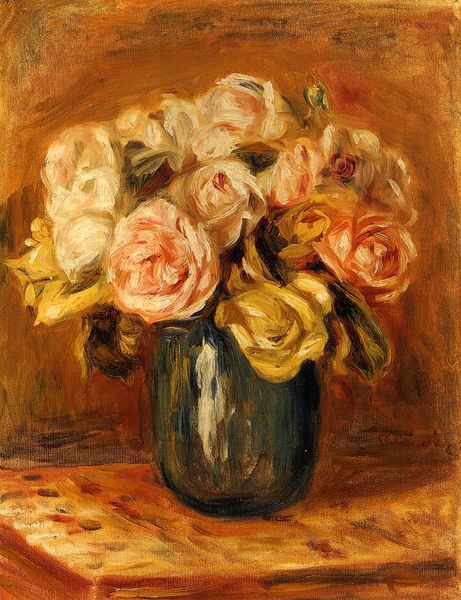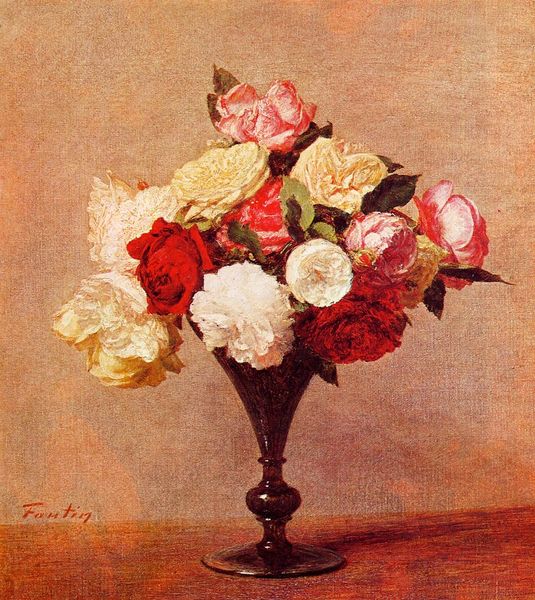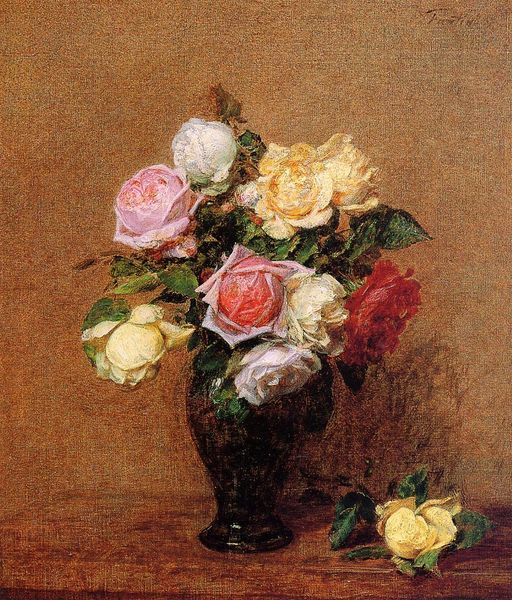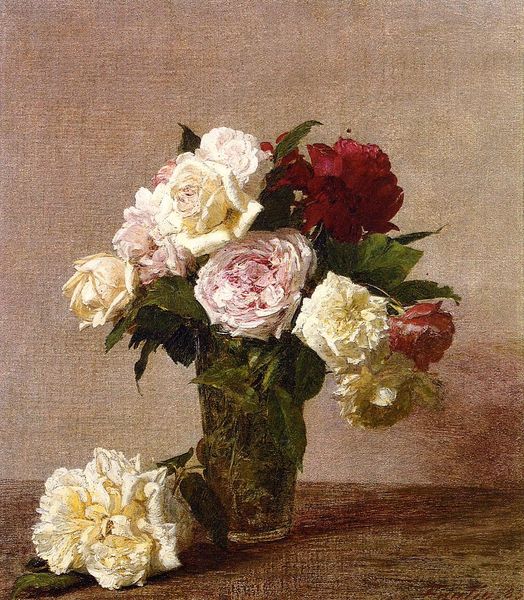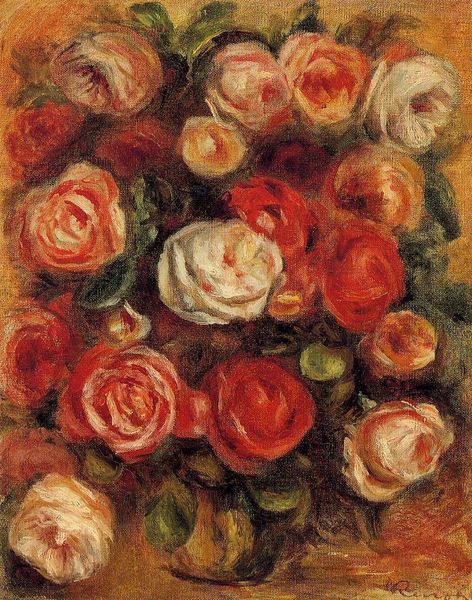
Copyright: Public domain
Curator: Renoir’s "Bouquet of Roses," painted around 1900, radiates a certain opulence, wouldn't you agree? Editor: Absolutely, I see an echo of bourgeois tranquility in the rose as a cultural object—especially considering its placement, seemingly captured in a domestic space, perhaps a bourgeois family's salon. Curator: It is interesting how Renoir uses the roses to reflect his own position. Roses, particularly in this period, often stood as symbols of beauty, love, and, yes, transient beauty, with all the implications that may bring. Editor: Transient, yes, but look at how he builds up the blooms, creating layers upon layers of delicate strokes. Each petal, with its subtle variations in color, suggests an underlying, more lasting structure and hints at the eternal. Curator: It is precisely this tension between fleeting beauty and enduring form that makes the symbolism so compelling. And roses, historically and cross-culturally, often represent an almost paradoxical set of ideas, a blend of desire and its eventual fading, the pleasures and pains that inevitably follow in its wake. Editor: He does capture that sentiment perfectly by blending a warm color palette of pinks, yellows, and reds with an almost sculptural handling of paint. Curator: Those specific hues resonate, evoking themes tied to nostalgia. Consider the historical weight; such works acted as emotional anchors. The association between love and roses solidified its role during courtship rituals across cultures, often accompanied by implied promises or hopes for fulfillment. Editor: This piece also makes a striking aesthetic statement with its painterly brushwork. The way Renoir creates a soft and diffused light lends itself well to his subject; roses are symbols and, as flowers, also specimens of beauty and elegance in nature. Curator: This canvas captures and holds our attention and imaginations even now, bridging turn-of-the-century social meanings with the enduring power that roses command, don't you think? Editor: A rather charming display of both artistic innovation and the subtle complexities of human desire, even after more than a century.
Comments
No comments
Be the first to comment and join the conversation on the ultimate creative platform.
